Green infrastructure is a nature-based approach that uses a combination of engineering and nature’s own systems to address environmental challenges like erosion, flooding, and air and water pollution.
Green infrastructure practices at the site scale include a wide variety of construction designs that are generally used in landscaping and site development around or adjacent to existing structures, including buildings, roads, and parking lots. Some practices, such as riparian buffers and living shorelines, are suited for sites along waterways.
Below, you will find overviews of eight examples of green infrastructure at the site scale. Each overview includes a link to a fact sheet with more details about each particular type of green infrastructure.
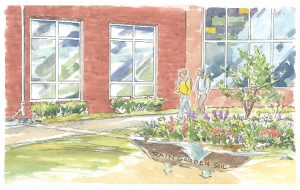
A rain garden is a shallow depression with vegetation that allows the rainwater and stormwater to collect and infiltrate into the ground. Typically installed in community and residential areas, rain gardens are designed to hold rainwater in place. Rain gardens and bioretention systems collect and filter stormwater through layers of mulch, soil, and plant root systems where pollutants are retained and absorbed using a specially engineered soil media. Rain gardens also provide beautiful habitats for native species.
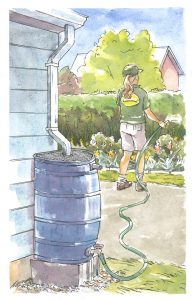
Rain barrels and cisterns are “rainwater capture” systems that collect and store rainwater from a roof that would otherwise be lost to runoff and diverted to storm drains and streams. A rain barrel usually consists of a 55-gallon drum that can sit conveniently under any residential gutter downspout. A cistern is a larger tank that holds up to several hundred gallons and uses a small pump to distribute the water throughout the landscape. Downspout disconnections can be an effective strategy for reducing sewer volumes and redirecting stormwater onto lawns, rain gardens, or other landscaping.
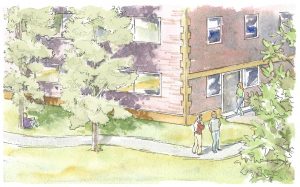
Planting and maintaining trees in urban settings—from large cities to small towns—provides a wide range of economic, environmental, and social benefits, particularly due to air quality improvements. Adding trees in urban neighborhoods can lead to reductions in particulate matter concentrations and other pollutants. Trees can reduce heat stress by lowering air temperatures and shading buildings and paved surfaces.
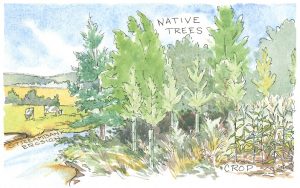
Riparian buffers are vegetated areas adjacent to waterways that help filter rainfall and runoff, absorb and retain high stream flows, and provide important wildlife habitat. Buffers link terrestrial uplands to stream, river, or wetland ecosystems. Buffers include a variety of planted, restored, or enhanced natural habitats, hosting different types of vegetation.
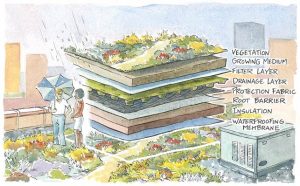
A green roof is a roof partially or completely covered with living plants and soil or other growing medium. Green roofs help reduce temperatures on the roof surface and the surrounding air during hot summer months, and can absorb and filter rain water, thus reducing the amount of stormwater runoff.
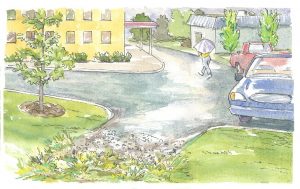
A vegetated swale, also known as a bioswale, is a shallow channel with dense vegetation that conveys and slows down stormwater runoff and helps it infiltrate the ground. Usually located near a road or a parking lot, swales can be utilized to increase stormwater filtration. Vegetated swales can also provide habitat benefits for native species, including birds and pollinating insects.
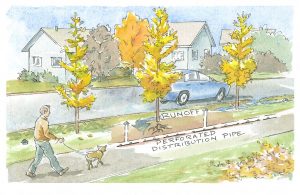
Tree boxes and tree trenches are types of bioretention systems. These systems collect and filter stormwater through layers of mulch, soil, and plant root systems where pollutants are retained, degraded, and absorbed. Tree boxes and tree trenches are generally designed to manage stormwater runoff from frequent, small-magnitude storms, but may provide stormwater detention from large storms or prolonged periods of rainfall.
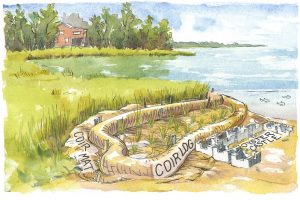
A living shoreline provides shoreline stabilization and erosion control while also preserving or enhancing habitat and water quality. Living shorelines are designed with living plants (emergent and submerged aquatic vegetation) and structures made with natural materials (oyster shells, earthen materials, or plant fiber logs) to help protect the shoreline from storms and waves. Living shorelines may also incorporate oysters, mussels, or other shellfish that form stable reefs and help filter water as they feed.
Related Topics: climate, construction, energy, green infrastructure, site-scale, sustainability